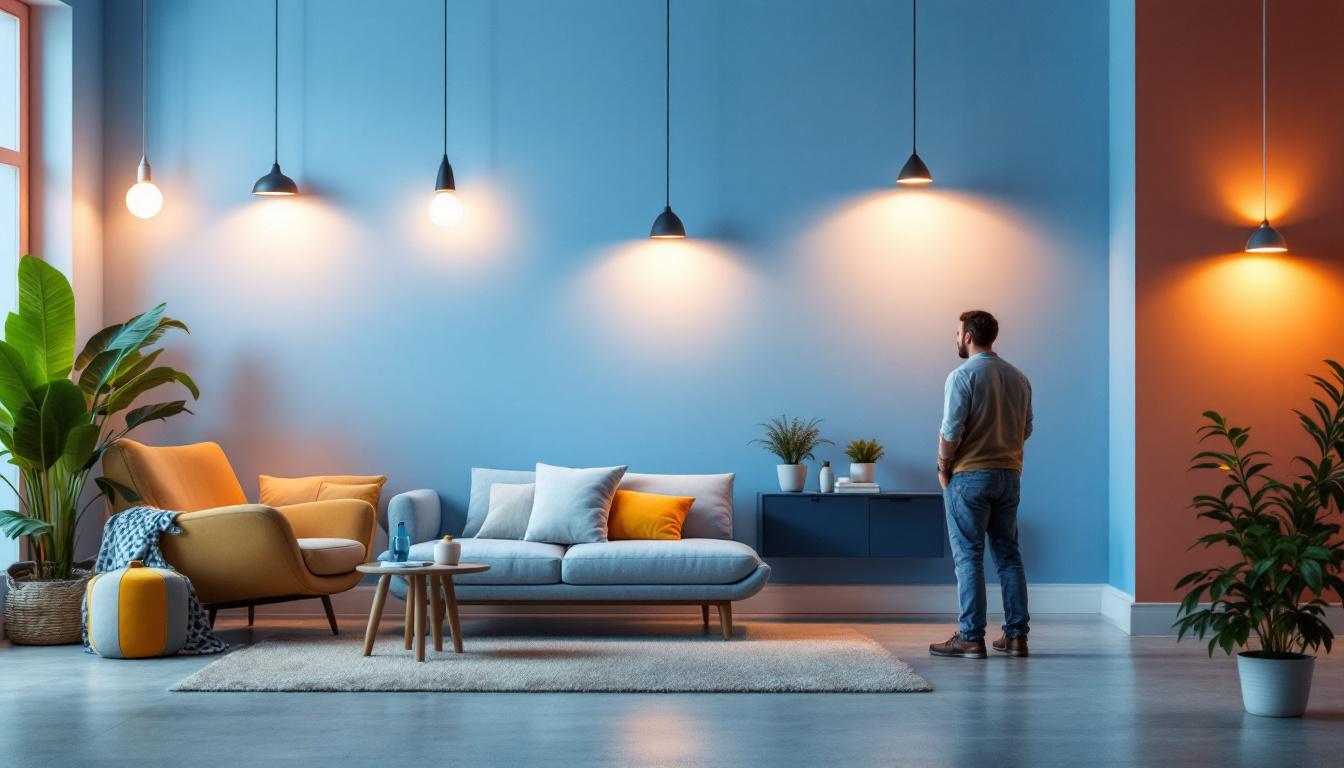
In the ever-evolving world of lighting solutions, LED tube lights have emerged as a popular choice for both residential and commercial applications. For lighting contractors, understanding the intricacies of LED tube lights can significantly enhance project outcomes, improve client satisfaction, and ultimately lead to increased business opportunities. This article delves into the essential points that every lighting contractor should consider when working with LED tube lights.
LED tube lights are energy-efficient lighting solutions that replace traditional fluorescent tubes. They offer numerous advantages, including longer lifespan, lower energy consumption, and reduced maintenance costs. However, to effectively incorporate these lights into projects, contractors must grasp their fundamental characteristics.
There are primarily two types of LED tube lights: direct replacement and retrofit. Direct replacement tubes are designed to fit into existing fluorescent fixtures without any modifications. In contrast, retrofit tubes require the removal of the existing ballast and may involve rewiring the fixture. Understanding the differences between these types is crucial for contractors when advising clients on the best options for their specific needs.
Moreover, some LED tube lights are designed for specific applications, such as those that are dimmable or compatible with smart lighting systems. These specialized tubes can enhance the functionality of a space, allowing for greater control over lighting levels and energy use. Contractors should consider these options when discussing project requirements with clients, as they can significantly impact the overall effectiveness and efficiency of the lighting solution.
LED tube lights offer a multitude of benefits that can appeal to both contractors and their clients. Firstly, energy efficiency is a significant advantage, as LED lights consume up to 75% less energy than traditional fluorescent lights. This not only reduces electricity bills but also contributes to a smaller carbon footprint.
Secondly, the lifespan of LED tube lights is considerably longer, often exceeding 25,000 hours. This longevity translates into fewer replacements and lower maintenance costs over time. Additionally, LED lights are available in various color temperatures, allowing contractors to create the desired ambiance for different spaces. For instance, cooler temperatures can enhance focus and productivity in office environments, while warmer tones can create a cozy atmosphere in residential settings.
Furthermore, LED tube lights are known for their superior light quality, providing better color rendering and brightness compared to traditional options. This improved quality can significantly affect the aesthetics of a space, making colors appear more vibrant and true to life. As such, contractors should emphasize the visual benefits of LED tube lights when discussing lighting solutions with clients, as this can enhance the overall appeal and functionality of the environment being illuminated.
When it comes to installing LED tube lights, several factors need to be taken into account. Proper installation is essential to ensure optimal performance and longevity of the lights. Contractors should be well-versed in the installation process and aware of potential challenges that may arise. Understanding the specific environment where the lights will be installed is also crucial, as factors such as humidity, temperature fluctuations, and fixture placement can significantly impact the overall performance of the lighting system.
One of the critical aspects of installing LED tube lights is understanding ballast compatibility. Some LED tubes are designed to work with existing ballasts, while others require bypassing the ballast entirely. Contractors must assess the existing fixtures and determine the best approach to ensure compatibility and efficiency. This assessment may involve checking the specifications of both the LED tubes and the current ballasts to ensure they are a suitable match.
It’s also important to note that using incompatible ballasts can lead to flickering, reduced light output, or even complete failure of the LED tubes. Therefore, thorough evaluation and planning are essential before installation. Additionally, contractors should consider the potential for future upgrades; selecting LED tubes that are compatible with a wider range of ballasts can provide flexibility for future lighting changes or enhancements.
For retrofit installations, proper wiring is crucial. Contractors should follow local electrical codes and guidelines to ensure safety and compliance. This may involve disconnecting the existing ballast and rewiring the fixture to accommodate the new LED tubes. It is also advisable to document the wiring changes made during the installation process, as this can be helpful for future maintenance or troubleshooting.
Safety should always be a top priority during installation. Contractors must ensure that power is turned off before beginning any work and should use appropriate personal protective equipment. Additionally, educating clients about the importance of hiring qualified professionals for installation can help mitigate risks associated with DIY projects. Furthermore, providing clients with information on the benefits of LED lighting, such as energy efficiency and reduced maintenance costs, can enhance their understanding and appreciation of the investment they are making in their lighting systems.
One of the most compelling selling points of LED tube lights is their energy efficiency. Lighting contractors can leverage this advantage when discussing project proposals with clients. Understanding the potential cost savings associated with LED lighting can help contractors make a strong case for choosing LED tube lights over traditional options. Furthermore, the longevity of LED lights—often lasting up to 25,000 hours or more—means that clients will not only save on energy bills but also on maintenance and replacement costs over time. This durability can be particularly appealing for businesses that rely on consistent lighting for operations, as it minimizes downtime and disruption.
To effectively communicate the benefits of LED tube lights, contractors should be able to calculate energy savings. This involves comparing the wattage of existing fluorescent tubes with the wattage of the proposed LED tubes. For example, if a client currently uses 32-watt fluorescent tubes and is considering 15-watt LED tubes, the savings can be substantial. In fact, switching to LED can result in energy savings of up to 50% or more, depending on the specific application and usage patterns.
Additionally, contractors should consider the hours of operation and local energy rates to provide clients with a comprehensive overview of potential savings. This information can be instrumental in justifying the initial investment in LED technology. By creating a simple cost-benefit analysis that includes these variables, contractors can help clients visualize their return on investment (ROI) over time, making the transition to LED lighting even more appealing. Furthermore, highlighting the environmental benefits of reduced energy consumption can resonate with clients who prioritize sustainability in their business practices.
Many regions offer incentives and rebates for upgrading to energy-efficient lighting solutions. Contractors should stay informed about available programs that can help clients offset the initial costs of LED tube lights. By presenting these options, contractors can enhance their value proposition and encourage clients to make the switch to LED technology. Some utilities even provide free energy audits to identify potential savings, which can be an excellent opportunity for contractors to engage with clients and showcase their expertise.
Moreover, understanding the landscape of federal, state, and local incentives can empower contractors to guide clients through the process of applying for these rebates. Many programs are designed to promote energy efficiency and can significantly reduce the upfront costs associated with LED installations. By actively participating in these initiatives, contractors not only support their clients in making informed decisions but also position themselves as knowledgeable partners in the transition to more sustainable lighting solutions. This proactive approach can lead to increased customer loyalty and potentially more referrals in the future, as clients appreciate the added value of informed guidance in their energy efficiency journey.
Effective communication with clients is paramount in the lighting industry. As LED tube lights become more popular, contractors should take the initiative to educate clients about the benefits and features of these products. This not only builds trust but also positions contractors as knowledgeable professionals in the field.
There are several misconceptions surrounding LED lighting that contractors should be prepared to address. For instance, some clients may believe that LED lights are too expensive or that they do not provide adequate brightness compared to traditional options. Providing clear, factual information can help dispel these myths and encourage informed decision-making.
Additionally, contractors should explain the differences in color temperatures and how they can affect the ambiance of a space. By helping clients understand these nuances, contractors can guide them toward the best choices for their specific applications.
After installation, offering ongoing support can significantly enhance client satisfaction. Contractors should be available to answer questions, troubleshoot issues, and provide maintenance tips. This proactive approach not only fosters long-term relationships with clients but also encourages referrals and repeat business.
The LED lighting industry is continuously evolving, with new technologies and trends emerging regularly. Staying updated on these developments can give contractors a competitive edge and ensure they are providing the best solutions to their clients.
One of the most significant trends in lighting technology is the integration of smart features. Smart LED tube lights can be controlled remotely via mobile apps or home automation systems, allowing users to adjust brightness, color temperature, and even set schedules. Contractors should familiarize themselves with these products and their installation requirements to meet the growing demand for smart lighting solutions.
By offering smart lighting options, contractors can provide added value to clients, enhancing convenience and energy efficiency in their spaces.
Another trend gaining traction is the ability to tune color temperatures and dim LED lights. This flexibility allows users to create customized lighting environments that can adapt to different activities or moods. Contractors should explore products that offer these features and consider how they can incorporate them into their projects.
By promoting the versatility of LED tube lights, contractors can appeal to a broader range of clients and applications, from residential settings to commercial spaces.
LED tube lights represent a significant advancement in lighting technology, offering numerous benefits for both contractors and clients. By understanding the various types, installation considerations, and energy efficiency advantages, lighting contractors can effectively incorporate these solutions into their projects. Additionally, educating clients and staying informed about industry trends will further enhance their expertise and service offerings.
As the demand for energy-efficient lighting continues to rise, contractors who embrace LED technology will be well-positioned to thrive in a competitive market. By focusing on quality installations, effective communication, and ongoing support, lighting contractors can build lasting relationships with clients and contribute to a more sustainable future.
Ready to elevate your lighting game with the efficiency and sustainability of LED tube lights? Look no further than LumenWholesale, where we provide lighting contractors with the highest quality, spec-grade lighting products at unbeatable wholesale prices. Say goodbye to local distributor markups and hello to a vast selection of reliable lighting that meets the most rigorous industry standards. With LumenWholesale, bulk buying is a breeze, and with free shipping, you’re guaranteed premium lighting at the best value — all without hidden fees. Make the smart choice for your lighting needs and experience the best in wholesale lighting today.

Discover innovative cost-saving strategies for lighting contractors in “Liht Bulbb.” This article explores practical tips and industry insights to enhance efficiency and profitability in your lighting projects.

Discover how Ballst is revolutionizing the lighting industry by streamlining processes for contractors.

Discover essential tips and strategies for lighting contractors to effectively troubleshoot and prevent common issues with sensor lights.

Explore the advantages and drawbacks of wall pendant lights for lighting contractors.